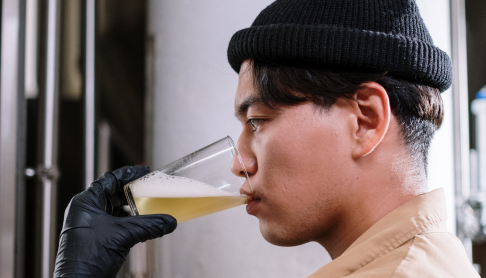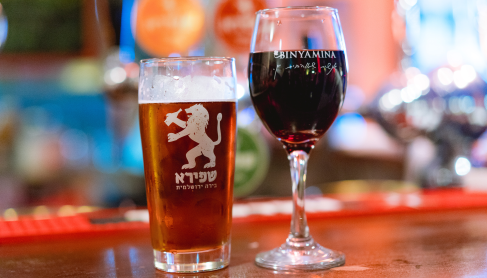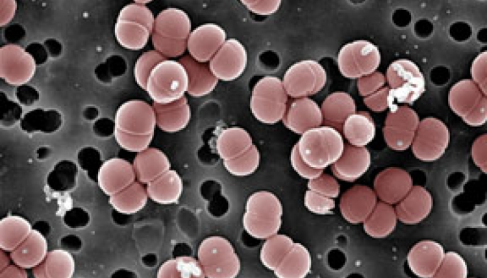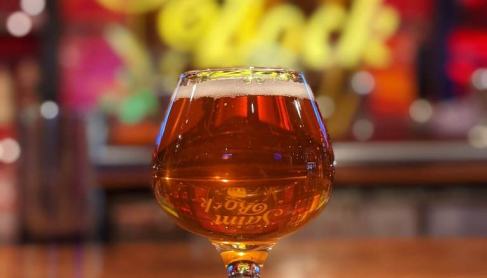Learn more about wild yeast
March 28th, 2023
Brettanomyces, saccharomyces bayanus, saccharomyces cerevisiae, bruxellensis, claussenii, lactobacillus… does this ring a bell? With this lexical field of wild yeasts, we explore a whole world of beer wort fermentation. Would you like to learn a little more about the subject? Let’s go on an adventure together!
How does a yeast work? What types of yeast are there?
Simply put, beer, without the magical intervention of yeast, is just a wort, a grain juice. The traditional yeast is then added to the wort and the fermentation process begins. For example, the traditional yeast used in breweries or microbreweries are easily recognizable and often come from the same strain. This is the case when you drink a Unibroue, for example; the characteristics of the yeast are distinct and compose an easily recognizable taste.
There are different types of traditional (or non-wild) yeasts and they are many and varied. Here are a few examples: Belgian yeast, Weizen-type yeast, Norwegian kveik yeast (with accents of orange peel, cloves and nutmeg), champagne yeast, Bohemian lager yeast, German Kölsch yeast, etc. The yeast works once added to the wort; temperature control is then crucial: the ideal is for low fermentation is between 10-13 degrees Celsius approximately (like a lager), high fermentation is between 18-21 degrees Celsius approximately (like an ale).
Sometimes, it is better to activate the yeast before pitching so that it is more vigorous, more valiant! This is called a pitched beer, whereas with a spontaneously fermented beer (like a lambic), you use the bacteria and wild ferments in the environment. A small distinction! Also, certain conditions must apply for the yeast to “work” such as the presence of nutrients, fermentable sugars, minerals, oxygen, nitrogen, etc.
What about our valued “wild” yeasts?
More precisely, we integrate them during fermentation. These organisms are resistant and can contaminate materials such as barrels and even pipes. Rigorous handling is required, as well as impeccable hygiene, of course. The wild has its reasons that reason does not know! Ideally, beers made with traditional yeast should be kept separate from beers made with wild yeast in separate productions.
What makes them different? A more untamed, unpredictable character! The result will vary more with the use of wild yeast. Often characteristics such as dryness or acidity will be obtained. A longer fermentation time is often required when using wild yeast. Up to a few months!
The properties of wild yeast
“The brewer who knows how to dose well can produce flavours that are certainly original, but as rustic as they are elegant, as refreshing as they are punchy, as dry as they are easy to drink”, just by experimenting with wild yeasts, say Martin Thibault and David Lévesque Gendron in Les saveurs gastronomiques de la bière. Incredible, isn’t it?
At the Brett&Sauvage nano-brewery, they add wild yeast from the Gaspé flora, which they have collected from an apple, currants, a native plant or from honey. We identify the yeast after isolating it, we characterize it, we sequence it, all this before using it. We have fun with the “signature” characteristics of 100% Quebec wild yeast,” says Rosemary Ahelo-White, brewer at Brett&Sauvage.
Wild yeasts are real gems! Brettanomyces brings horse, leather, mouse, flower and earthy flavours; acetobacter creates vinegar flavours and lactobacillus brings us to the plain yogurt side!
Finally, what about spontaneous fermentation? Spontaneous fermentation is different because it takes place without adding yeast to the wort. The ambient microbes present on the beer’s ingredients do all the work. Finally, the fruit will often be complementary to spontaneous fermentation beers or beers made with wild yeast, because it is a perfect complement to the aromas already present in other ways.
By Paule Gosselin
Enthusiastic literature professor, passionate about beer, its ingredients and its craftsmanship, Paule Gosselin loves above all to share her love of excellent brewing products through her writing. She is always on the lookout for trends.







